Have you ever opened the door and witnessed a stuffing explosion with your dog happily wagging their tail in the middle? Let’s catalog the thoughts that go through your head (in no particular order). You have to clean up the mess. Did your dog ingest anything? How can one bed contain so much stuffing? Now you need to buy ANOTHER bed. If you’re tired of coping with this endless cycle, it’s time to investigate the best dog beds for chewers and say goodbye to wanton destruction.
Why Dogs Chew Their Beds
When dealing with the frustration of clean-up, it’s hard for people to understand why dogs chew their beds. They seem comfortable snoozing on the dog bed when you’re around, right? Then you step out to run an errand and return to bed apocalypse. What happened in that short time?
Internet memes come up with plenty of excuses for the destruction – everything from spiders (reasonable in my book) to the cat. The truth is a little more realistic.
- Teething (especially in young dogs)
- Dental hygiene
- Boredom
- Play
- Anxiety
Tooth Health
Unlike children, dogs don’t receive visits from the Tooth Fairy. You’ll rarely see your dog’s primary or deciduous teeth (baby teeth). Why? They’re tiny, and they tend to get lost in bedding or swallowed. (Don’t worry – they’re hollow and safe to pass through the GI tract) In general, unless your vet remarks on your dog’s teeth, it’s easy to forget they need regular dental care.
Your dog doesn’t forget, though.
Their gums feel uncomfortable during the teething process. If they’re experiencing problems with their teeth or gums, they chew to ease the discomfort. Harder toys might cause pain, so they opt for gentler options. What’s soft and available when they’re relaxing?
You got it – their bed.
If you don’t want to deal with frequent bed destruction, start a regular habit of brushing with quality dog toothpaste. Provide appropriate dental treats. And make sure your vet is checking for more severe tooth ailments.
Mental Stimulation
Have you ever found yourself shredding pieces of paper? Do you own a fidget spinner? Your body gets occupied with a task for one purpose – BOREDOM.
Dogs aren’t any different.
Sometimes chewing their dog bed is because they have nothing else to do. They’re inventing a game to stave off doldrums.
If you have an intelligent breed, such as a Golden Retriever, mental stimulation is crucial. They NEED something to do. Without puzzle toys or regular exercise sessions to get those synapses firing, they turn to destruction. Figuring out new ways to chew their dog bed to pieces fits the bill.
After all, seeing the reaction on your face is new and exciting each time.
Separation Anxiety
Nervous dogs chew their beds for solace. The act of chewing calms them down. If you see bed blizzards after you leave the house, this could be a sign of separation anxiety.
You may want to invest in calming treats or chews. Consider looking into a pet-sitter to come by the house to spend time with your dog and reassure them they’re not alone.
If you can find the root of your dog’s chewing habits, you’ll stave off dog bed explosion. Breaking the pattern won’t happen overnight, but you and your dog will be happier with some dedication and work.
The Best Materials for Dog Beds for Chewers
Of course, you need a dog bed for your chewer in the meantime. That means taking a close look at the available materials. The biggest downside of dog beds for chewers is that you don’t get soft, plush fabrics. Such materials can’t hold up to dog teeth. You need sturdy fabrics that either resist or discourage chewing.
- Nylon: The best nylon on the market is 1680D ballistic nylon, though ripstop is another popular choice. Hiking backpacks utilize ballistic nylon. While it isn’t specifically “chew-proof,” dogs don’t like chewing it.
- Canvas: Canvas isn’t as durable as ballistic nylon, but it falls into the same category of discouraging chewing. It’s just not an enticing fabric.
- Denim: Yup, good old blue jeans. You know they’re durable, and they’re not a common material for dog toys. As such, dogs don’t tend to associate the fabric with chewing.
Choosing a Dog Bed for Chewers
Selecting a dog bed for a chewer is a careful investment. Odds are you’ve already gone through a series of beds and a lot of frustration. You want this bed to last. Make sure you take some time for careful research.
- Nothing is “indestructible” or “chew-proof.” Many manufacturers use these words in their descriptions, and it’s tempting to fall for them. What they mean is that even if the bed gets chewed, there won’t be EXCESSIVE damage. The hope is your dog will lose interest when they can’t destroy the bed.
- Memory foam ISN’T chew-proof. If you have an older dog with arthritis, your odds of finding a chew-resistant orthopedic bed aren’t high. The cover needs to deter chewing to keep them away from that mattress. You may need to decide where your most significant concern lies: comfort or chewing.
- The materials aren’t always clean-friendly. While the fabrics are versatile enough for indoor and outdoor use, they aren’t always the best for cleaning. A lot need to be air-dried (nylon melts in the dryer).
Best Dog Beds for Chewers
If your dog is a chewer, they need a sturdy dog bed to prevent this bad habit. You CAN consider other dog beds we’ve reviewed. When chewers are discouraged, you’ll find it mentioned. These dog beds, in particular, are designed with chewers in mind. So if you’re ready to stop the stuffing blizzard madness, let’s get your dog into a bed for chewers.
Bolster-Style Dog Beds for Chewers
Bolster beds not only provide a place for your dog to snuggle, but they’re also a source of comfort for dogs with anxiety. If separation issues are the drive behind your dog’s nibble habit, these beds are just the ticket.
Blueberry had chewers in mind when they designed their bed. With bolsters on three sides, your dog can snuggle into comfort. The heavy-duty fabric is sewn with nylon and available in a variety of color options. The zippers for the bolsters are hidden, keeping them well away from inquisitive teeth. The bottom cushion contains three separate compartments, helping avoid clumping and keeping your dog’s comfort a priority. The covers come off for easy washing and drying. Blueberry is even helpful enough to include a bone-shaped chew toy as an alternative to the dog bed!
Downsides? People had no problem zipping the covers off, but getting those covers back on proved a problem. Also, if you want orthopedic support, this bed isn’t the best – people felt the bottom cushion wasn’t comfortable for aging dogs.
The Good
- Heavy-duty fabric sewn with nylon
- Hidden zippers
- Washable cover
The Bad
- Difficult to get covers back on
- No orthopedic support
Casper provides a little bit of everything, including chew resistance. Their durable cover is made from bonded microfiber – no teeth are getting through! Casper even thought of your active dog in their design. Extra fiber bunches in the cover, encouraging them to dig and “nest” into the bed. No need to worry about a puncture – the microfiber holds up to the abuse. Even better, the cover zips off for easy washing and drying. If you’re looking for comfort, you’re in luck because Casper has supportive foam bolsters and a second layer of cushioning memory foam. Want to make sure this is the right dog bed? You get 30 days to “test drive” this dog bed in your home. Best of all, the Casper comes with a limited one-year warranty!
While our Greyhound isn’t a chewer, she DOES dig into her beds. The cover holds up nicely to her explorations. And she loves the extra memory foam support. We couldn’t be happier with it – and so’s she!
The downsides? Well, such amazing features are on the pricey side. So you’ll need to decide if they’re worth the investment. Also, Casper comes with a weight limit. Your dog can’t weigh more than 90 pounds to enjoy this dog bed.
The Good
- Bonded microfiber cover
- Supportive foam bolsters
- Memory foam base
- 1-year limited warranty
The Bad
- Expensive
- Dogs must weigh less than 90 pounds
Mattress-Style Dog Beds for Chewers
Mattress-style dog beds are a versatile option for chewers. Whether you want to leave them out for your dog to flop onto or place them in crates, they accommodate all sleeping positions. If you’re careful about your fabric choice, you can even turn these beds into outdoor options to give your dog their own space on the deck or porch.
Yes, another orthopedic option! Big Barker designed this dog bed with crates in mind, but that doesn’t mean they sacrificed comfort. The heavy-duty canvas cover resists tearing and chewing. The sturdy zipper gets safely tucked away from prying teeth. The cover slips off and is completely washable. That orthopedic mattress features 2 inches of support under a 2-inch cushion of orthopedic foam. The foam itself is waterproof. Best of all, you get a TEN-YEAR warranty with this dog bed! (Doesn’t get better than that)
Downsides? This dog bed was designed for crates, so they run on the smaller side. People also complained that the fabric was noisy when their dogs moved around. It’s up to you whether you feel that it’s worth keeping your dog from chewing their bed.
The Good
- 2 inch support base with 2 inches of orthopedic foam
- Heavy-duty canvas cover
- Waterproof foam
- 10-year warranty
The Bad
- Sizes run small
- Can be noisy when dog moves around
If you’ve ever ventured on an outdoor adventure, you’ll recognize the Carhartt brand. This dog bed is made from a durable duck canvas, treated with a dog-safe water-repellant. The cover’s sturdy metal zipper is concealed in a specialized hidden flap that keeps it away from dog teeth. You can remove the cover for regular washing without a problem. The mattress itself is stuffed with polyester fill, letting your dog flop down in comfort.
The downsides? If you have a puppy or smaller dog, their tiny teeth can pull threads from the canvas. Without a memory foam mattress, this also isn’t a great choice for dogs with arthritis. And, once again, people with strong chewers felt the dog bed failed.
The Good
- Duck canvas cover
- Water-repellant treatment
- Concealed zipper
- Washable cover
The Bad
- Small teeth can pull threads from canvas
- No orthopedic support
There are several versions available when it comes to The Dog’s Bed. You want to skip the faux fur version if you have a chewer (faux fur is too tempting). The nylon cover is the best option if your dog likes to nibble. The design holds out against dog teeth. There are a variety of colors available, even in nylon. The cover slides over a solid 4 inches of support foam topped with 2 inches of memory foam. (Yes, an option for dogs with arthritis!) You get a waterproof liner to protect the mattress, too.
So what are the downsides? The covers aren’t as durable as people hoped, and while you can order replacements, they’re expensive. The nylon cover is washable, but it needs to air-dry so the nylon won’t melt. People also had difficulty getting the covers on and off the mattress.
The Good
- Nylon cover
- 4 inches of support foam topped with 2 inches of memory foam
- Waterproof liner
The Bad
- Difficult to get covers on and off
- Covers not very durable
- Must air-dry cover
If you’ve had your fill of stuffing blizzards, Hero Dog has your solution. The cover IS a soft fleece, but the lack of stuffing makes it difficult for dogs to bite or chew. Fur doesn’t stick to this cover’s surface (always a bonus). The entire bed can get thrown into the wash over and over again with no loss of shape. Thick cotton eases pressure points for your dog, keeping them comfortable. There’s also a non-skid bottom for safety.
Downsides? Obviously, your dog isn’t getting much in the way of padding, and there’s no orthopedic support. Also, determined chewers can still destroy this bed – you just won’t see a snowfall of stuffing.
The Good
- Soft fleece cover
- Fur-resistant
- Entire bed washable
- Non-skid bottom
The Bad
- No orthopedic support
- Determined chewers can destroy
If you were in any doubt, K9 Ballistics reassures you your dog is in good hands with its name. The ballistic ripstop nylon cover resists chewing, digging, and biting. K9 even took the time to triple overlock the seams; your dog is NOT getting through this cover! They’re so confident, you get a 90-day limited damage warranty on that cover. Plus, it’s waterproof, washable, and resists hair and dirt. Inside this fabulous cover is a comfy foam mattress, guaranteed not to flatten for a whopping ten years.
The downsides? There’s no non-skid bottom, and nylon WILL slide across the floor. While the cover has a warranty, the mattress inside does NOT. You have to air-dry the cover since nylon can’t go in the dryer. People also felt that determined chewers could get through the nylon, so consider your dog carefully before getting this bed.
The Good
- Ballistic ripstop nylon cover
- Triple overlock seams
- Waterproof, hair-resistant, and washable
- 90-day limited damage warranty
- 10-year guarantee against flattening
The Bad
- No non-skid bottom
- Need to air-dry cover
Best Elevated Dog Beds for Chewers
Let’s say your dog is one of those determined chewers. They haven’t met a bed yet they couldn’t destroy. You don’t want to relegate them to the floor, but you also don’t want to track down any more foam or stuffing (stuffing is like glitter – it’s never gone). An elevated dog bed is your best compromise. You’ll keep their joints off the floor, but you’ll take away the temptation of plushy fabrics.
Yup, K9 Ballistics is making a second appearance on this list. The 1680D ballistic nylon cover resists chewing, digging, and tearing. It’s also designed to hold out against dirt, hair, odor, and water. You can easily spray it down with a hose, or you can remove the cover and throw it in the wash. The dog bed outsmarts chewers, denying any tooth-holds. K9 is confident enough in their cover, they give you a 120-day chew-proof warranty. The aluminum frame is low enough for older dogs to step onto and durable for long-time usage.
Downsides? People struggled with assembly, so look through those instructions carefully. While it is low, there’s no orthopedic support if your dog has arthritis. That nylon cover also needs air-drying. Finally, heavier dogs cause the cover to sag, and, since it’s low, they can end up brushing the floor.
The Good
- 1680D ballistic nylon cover
- Resists dirt, hair, odor, and water
- Low frame to aid senior dogs
- 120-day chew-proof warranty
The Bad
- Difficult to assemble
- No orthopedic support
- Sags with heavier dogs
Kuranda brought out the keyword “indestructible,” but they back it up with a careful design. The vinyl cover resists chewing and digging, with the seams concealed within the structure of the frame. That means no edges for probing teeth! The supports come in PVC or aluminum pipes, neither of which satisfy a chewer’s interest. The frame distributes up to 250 pounds evenly across the vinyl, keeping your dog from developing pressure sores. Rubber feet hold the bed firmly in place at all times. The entire bed is easy to clean and comes with a one-year replacement warranty.
The downsides? Yeah, it’s not soft. You CAN purchase a fleece pad to attach with Velcro, but it ISN’T chew-proof. Also, you can’t put vinyl in the dryer. The bed’s definitely on the expensive side, especially when you look at the XXL size. Assembly takes two people and a lot of strength. The rubber feet come off, and those are tempting to chew (we don’t want foreign bodies). Finally, the vinyl will give out under determined diggers.
The Good
- Vinyl cover
- Distributes up to 250 pounds evenly
- 1-year replacement warranty
The Bad
- Expensive
- Difficult to assemble
- Vinyl can't hold up to diggers
Chew Time is Over
No one wants to take their dog’s bed away. But you also don’t want to keep coming home to stuffing explosions. It’s a mess, and it’s a health risk for your dog. So compromising on a dog bed designed for chewers is the best option.
Does it mean choosing a fabric that’s not as soft? Maybe.
Does it mean opting for a bed that isn’t as cushy? Possibly.
Does it mean giving up on dog beds entirely? Of course not.
Take a look at why your dog is chewing their bed in the first place. If you find the source, you can work on the solution. While you fix the problem, get a dog bed for chewers. Then, you’ll rest easy knowing their bed is safe.
And you won’t hold your breath every time you come home, wondering if a blizzard has happened.

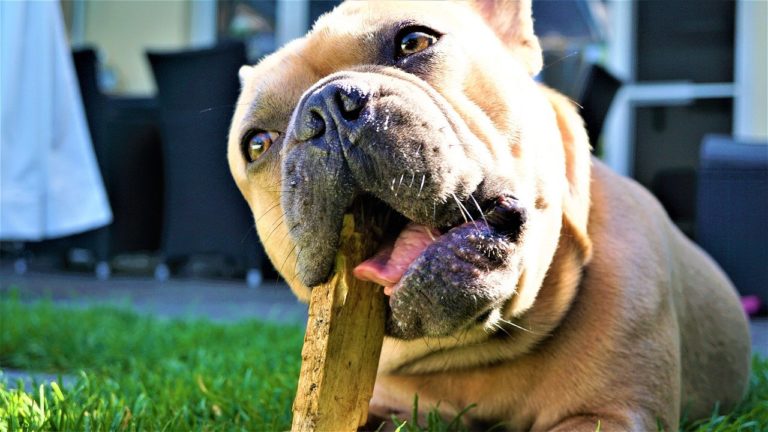
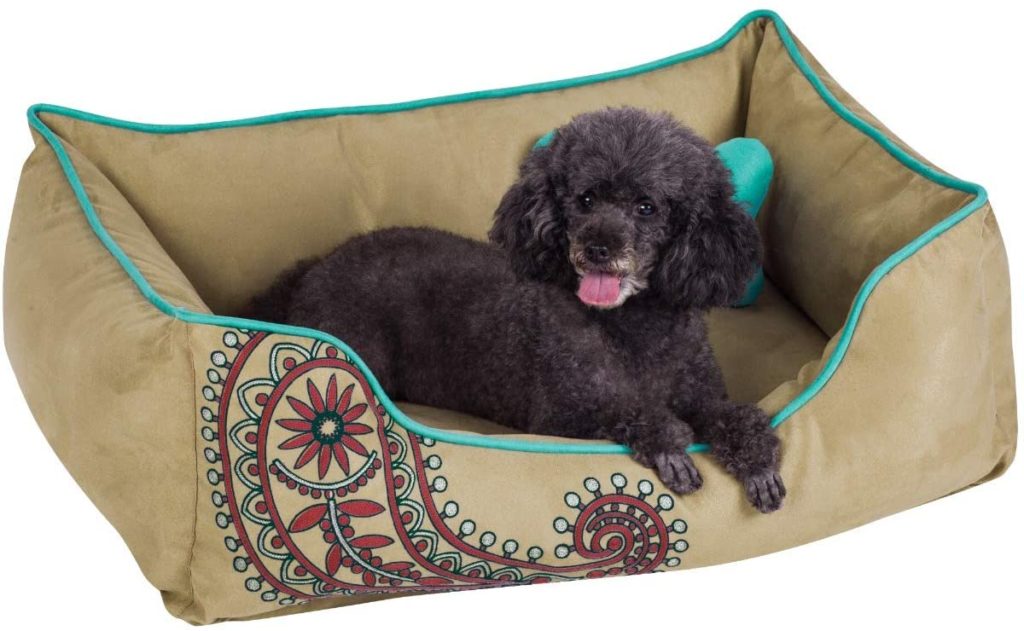
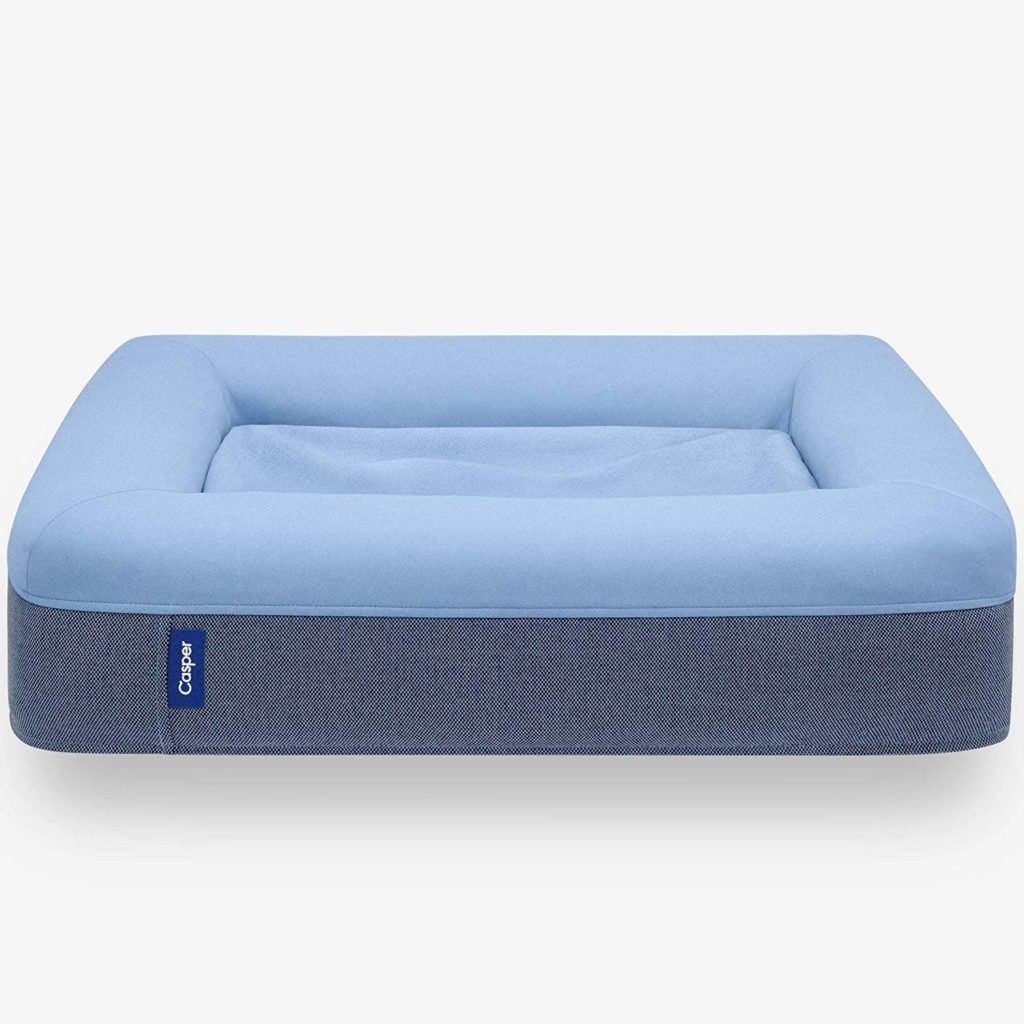
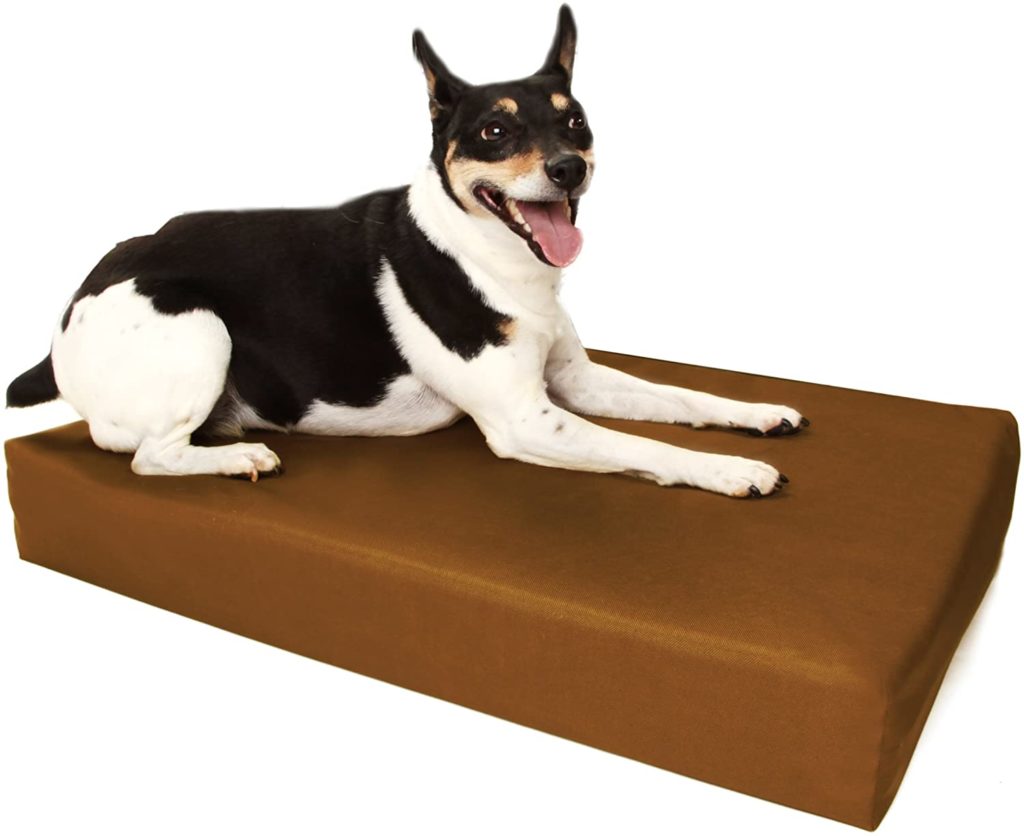
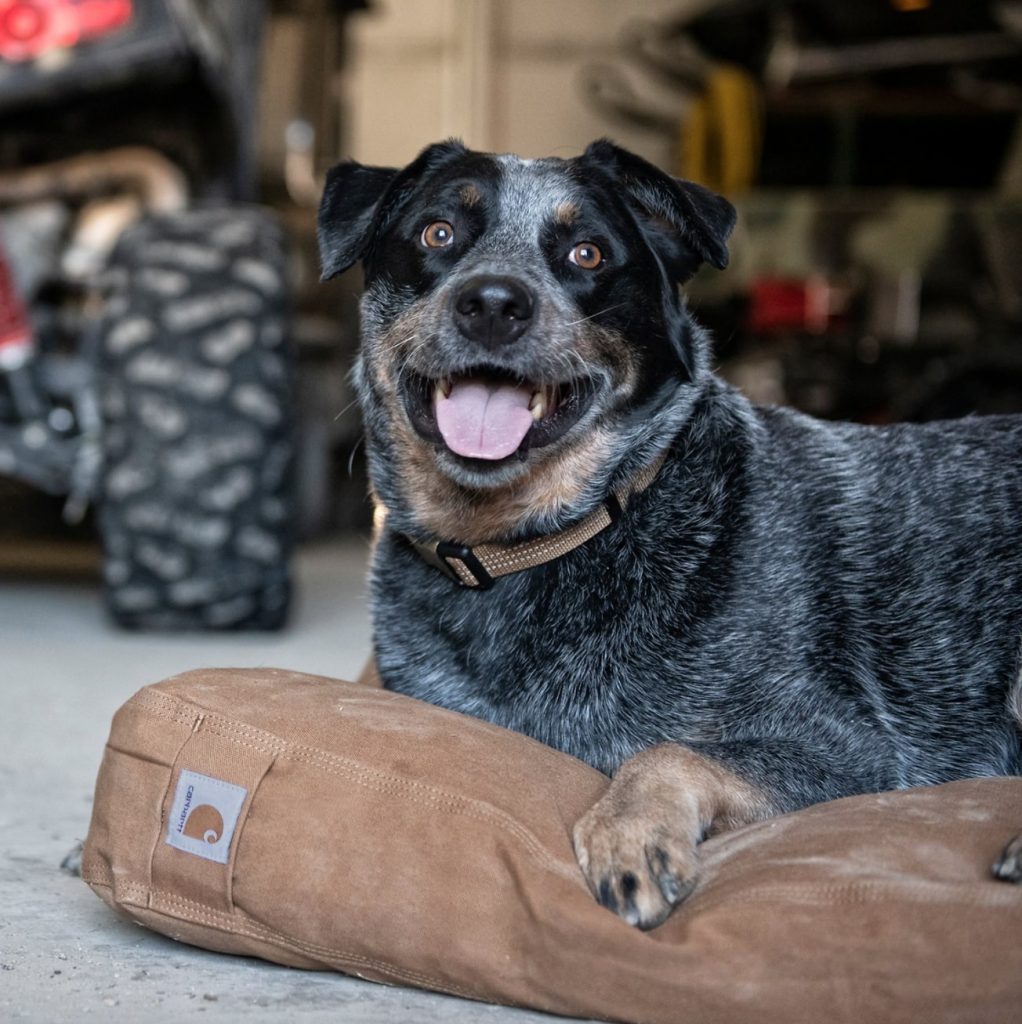
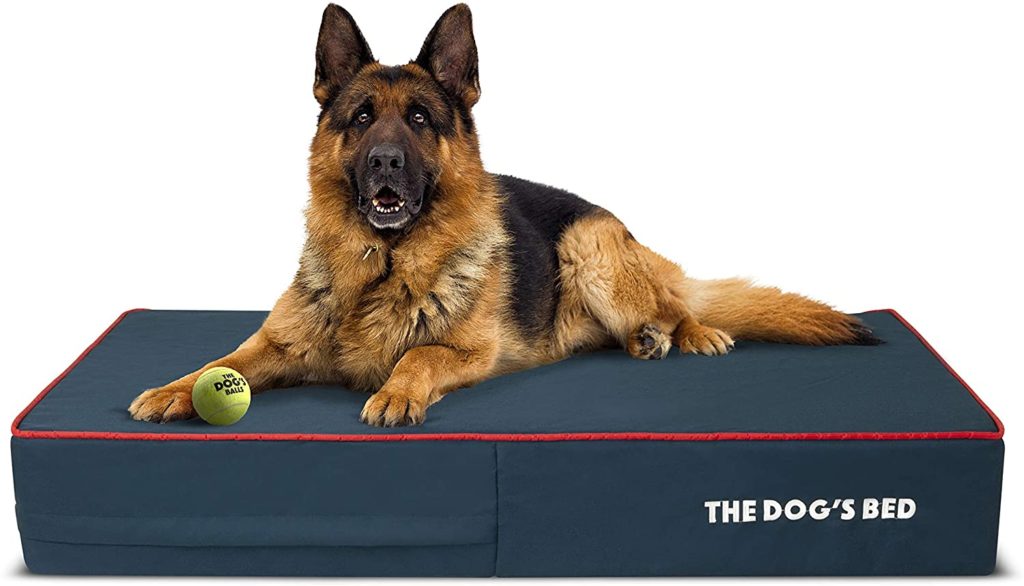
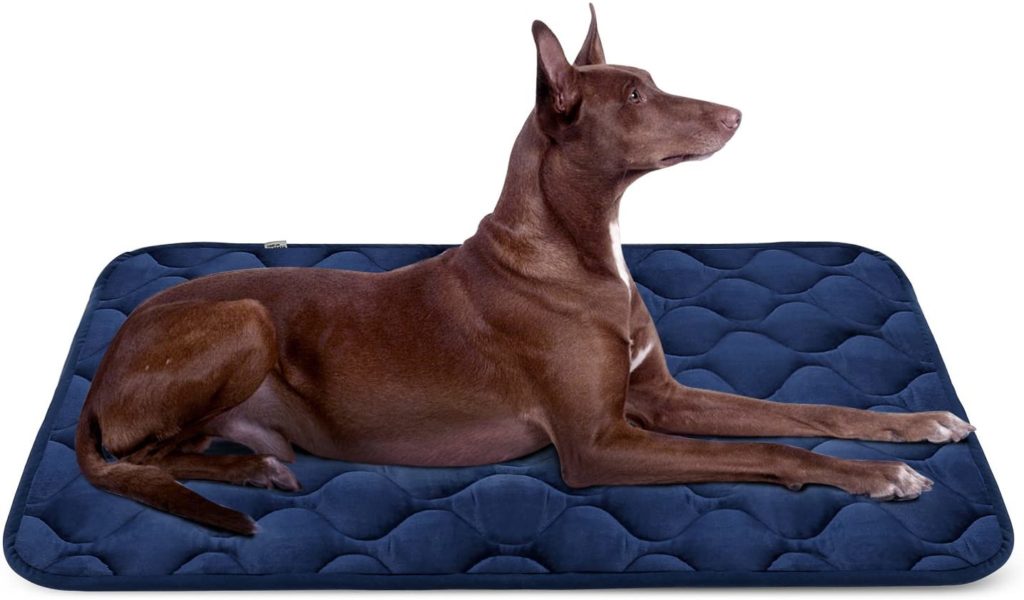
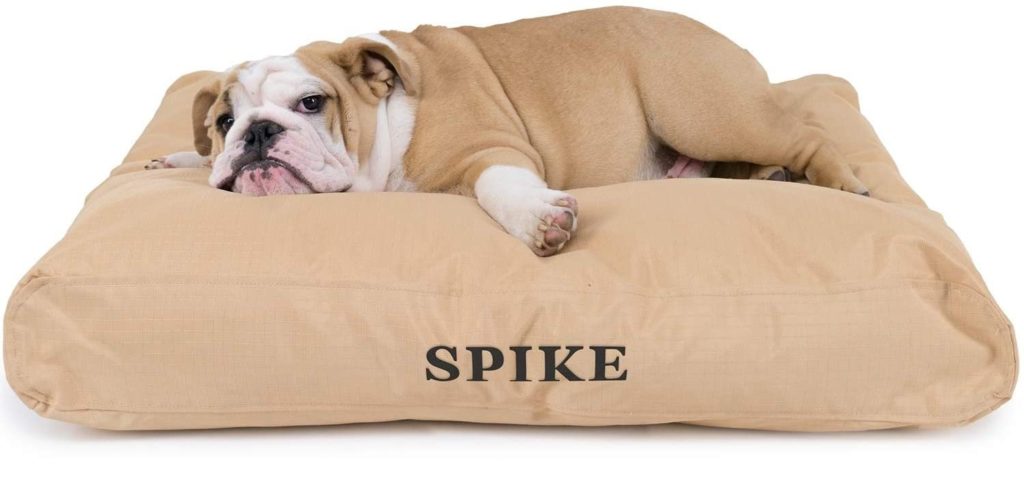
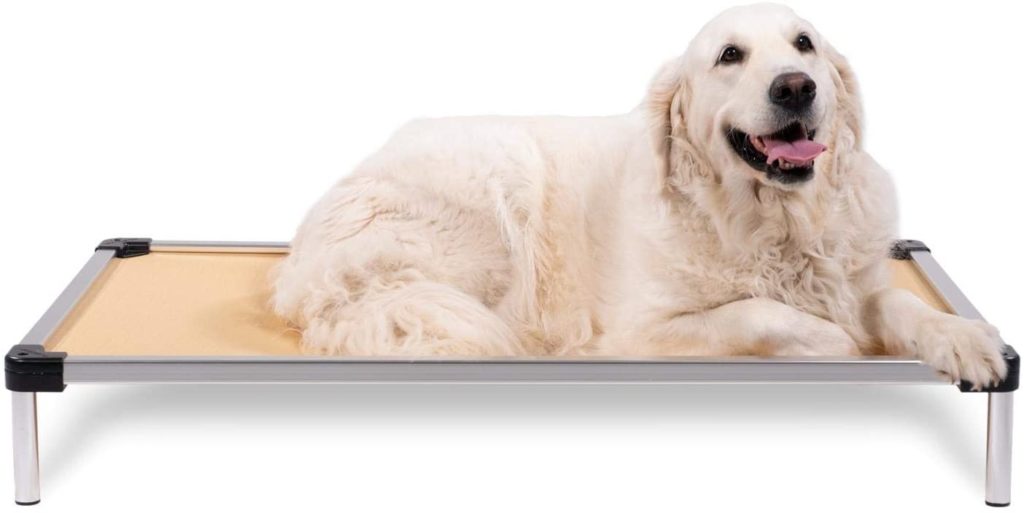
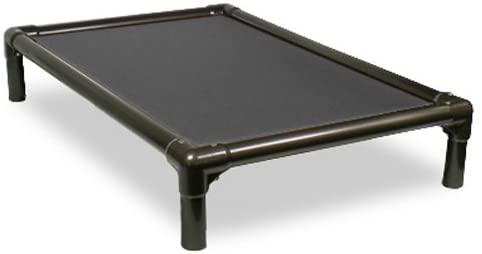
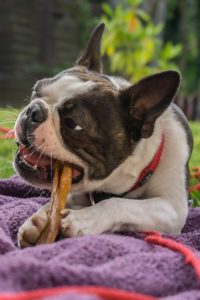
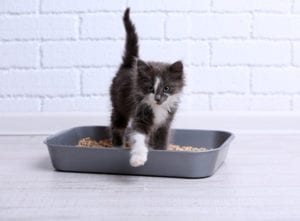
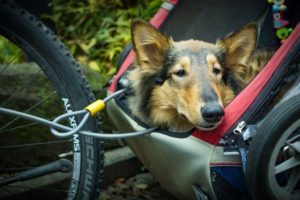

No comment yet, add your voice below!